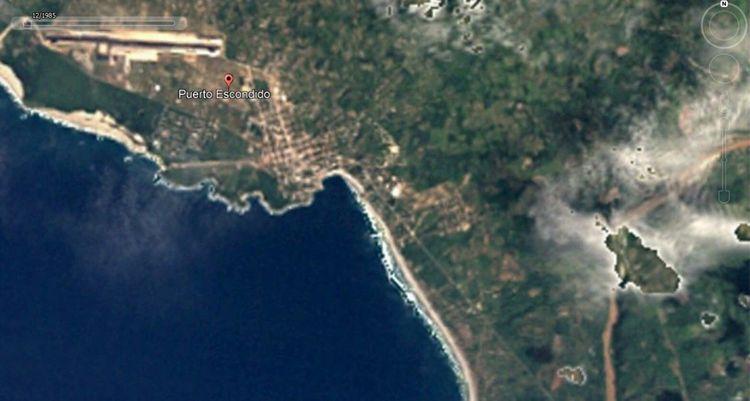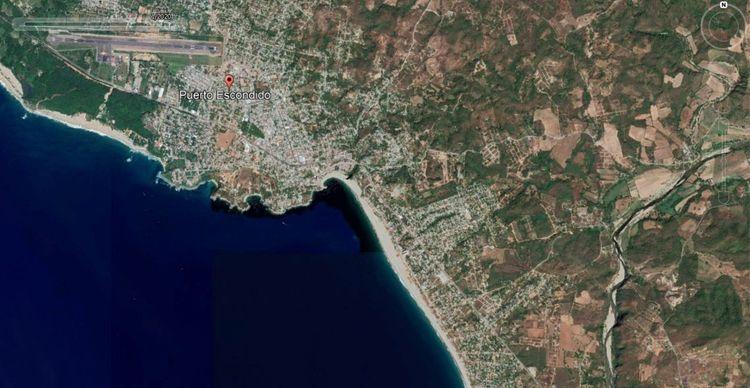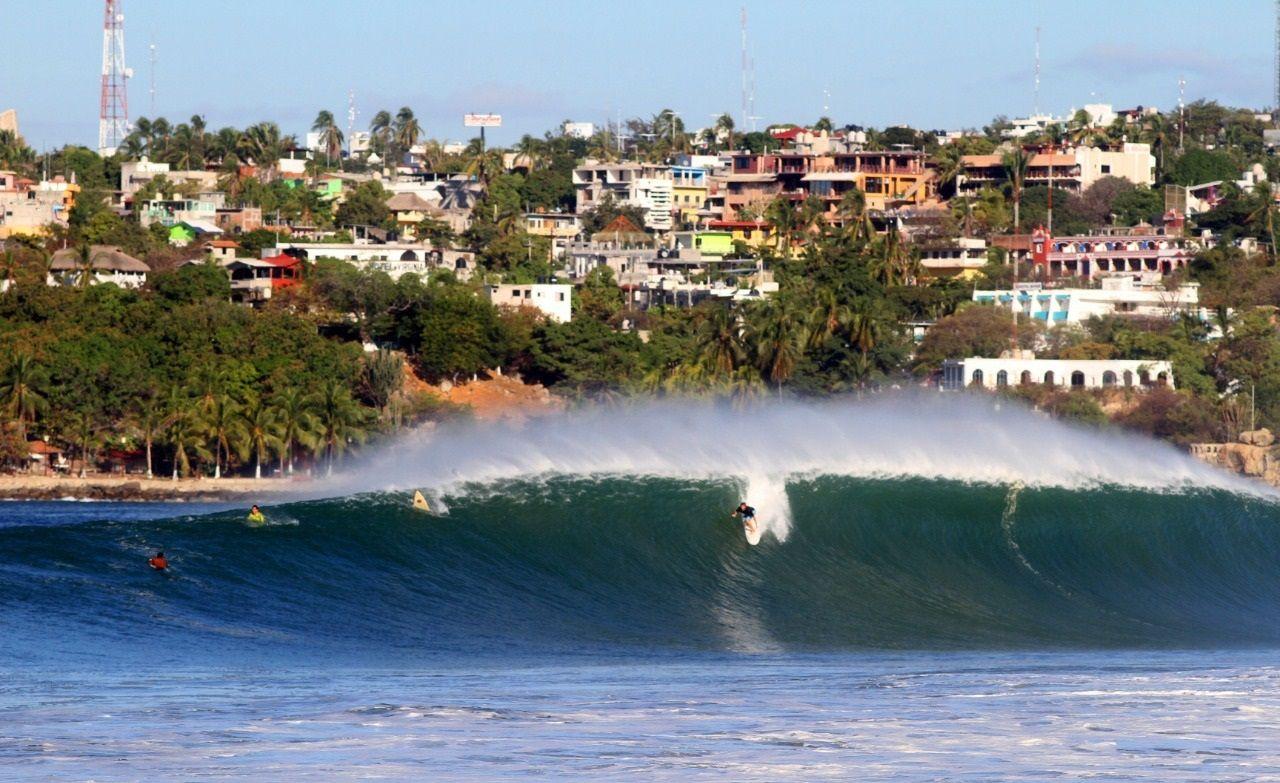In July 2021, the American magazine Time chose Puerto Escondido as one of the 100 best destinations in the world, but little is known that most of the city has no sanitary drainage, or that there is little availability of water.
The tourism and real estate boom on the coast of Oaxaca has not been accompanied by planning, since the municipalities where the main tourist destinations are located lack local development and planning programs, legal instruments that aim to determine the diagnosis of environmental and technological conditions in land use and regulate land uses, inside and outside population centers.
Activists fear that the history of the Riviera Maya will be repeated: developments with a high environmental impact and benefits that remain in few hands.
Since the seventies, the National Fund for the Promotion of Tourism (Fonatur) promoted the growth of the Puerto Escondido area, between the municipalities of San Pedro Mixtepec and Santa María Colotepec, but the project was abandoned in the 1980s to focus on the bays of Huatulco, in the municipality of Santa María Huatulco, where the expropriation of 21 thousand hectares of land took place, according to the publication of the Official Gazette of the Federation of April 17, 1984.
Since then, state development plans have also focused on encouraging tourism activity in these and other poles, such as the Ventanilla-Puerto Ángel corridor, which includes Mazunte and Zipolite.
In 2021 alone, these coastal destinations attracted 1,440,346 visitors, both domestic and foreign, according to figures from the Oaxaca Tourism Secretariat.
But, despite the fact that development in the area responds to government strategies, it has not been combined with strategies for sustainable growth of the destination, said Francisco Rincón Gallardo, director of the Oaxacan Fund for the Conservation of Nature (FOCN).
“There are no clear regulations or urban development plans in municipalities,” said the specialist.
The tourist corridor along the coast of Oaxaca, which extends from the Chacahua Lagoons to the Huatulco Bays, is made up of six municipalities: Villa de Tututepec de Melchor Ocampo, San Pedro Mixtepec, Santa María Colotepec, Santa María Tonameca, San Pedro Pochutla and Santa María Huatulco.
Of these, only Santa María Tonameca (where Mazunte is located) and Villa de Tututepec de Melchor Ocampo (Lagunas de Chacahua) have a municipal Ecological Management Program. However, Rincón Gallardo said that in practice they have not been made valid, “since municipalities do not have technological tools to apply and verify that development plans match what is stipulated in the legal system, as well as the ignorance of public servants on the subject.”
Huatulco and Puerto Escondido are the most important destinations in the area, but the municipalities where they are located have no regulations. In the case of Santa María Huatulco, although there has been a creation process since 2015, this instrument has not been published.
The growth in the number of hotels, the arrival of more tourists, as well as a retired foreign population, has also increased the demand for labor. Santa María Huatulco, with 50,862 inhabitants, had a population growth of 31.7% between 2010 and 2020, while in Santa María Colotepec, where the urban area of Puerto Escondido grows, it was 19.1%.


Puerto Escondido 1985-2020. Photo: Google Earth
“Not managing population growth is a red light, and that's what we're seeing right now, a phenomenon of gentrification. It gives rise to disordered, excessive growth, without any padlock that could impose certain limitations,” said Francisco Rincón Gallardo.
The activist also told Journalism Causa Natura that one of his concerns is that the arrival of visitors will skyrocket with the highway project that seeks to connect the City of Oaxaca to the coast in a time of two hours and 30 minutes, because although infrastructure projects are still being built to facilitate access, there is no sustainable development project.
“Puerto Escondido has only 30% of drainage, the rest is treated in septic tanks and plants that are already beginning to exceed their capacity,” he said.
In accordance with the provisions of the General Law on Ecological Balance and Environmental Protection (Lgeepa), all real estate developments affecting coastal ecosystems, as well as activities in wetlands, mangroves, lagoons, rivers, lakes and wetlands connected to the sea require authorization regarding Environmental Impact.
To this end, promoters have the obligation to submit an Environmental Impact Statement (MIA) to be evaluated, a technical document detailing the works, the ecosystem where it is planned to build, possible impacts, mitigation measures and compliance with environmental regulations, standards and programs.
But in the absence of local regulations, these documents are included in the Regional Ecological Planning Program of the Territory of the State of Oaxaca. However, this instrument does not contain specific data on the load capacity of the Environmental Management Units, density, maximum height, among others.
Another problem is access to drinking water. Touristic municipalities along the coast have experienced an abnormal drought over the past year, according to the Mexican Drought Monitor, published by the National Water Commission.
Rincón Gallardo said that in Puerto Escondido, supply is already a serious problem with the population it currently inhabits, so it must be considered when increasing housing capacity and new housing complexes.
Héctor Hernández Ramírez, partner at Terra Conservación y Desarrollo SC, an environmental agency based in Santa Cruz Huatulco, said that the lack of planning is also increasing the movement of native inhabitants who lived on the coast to more remote areas. Their homes are replaced by high-value businesses, hotels, restaurants or condominiums.
Oxean and the dispute over Bacocho Beach
Oxean Paraíso Escondido is one of the projects that exemplify zero urban planning, Hernández Ramírez said. This is a complex of 80 apartments in front of one of the most popular beaches in Puerto Escondido.
Although the coast has been highly developed over the past decade, the construction model had been low in density, said Sachiko Hayasaka, the town's marine biologist.
The construction of this condominium, which offers apartments starting at 5.2 million pesos, has mobilized the community since 2020, when it was authorized by the Ministry of Environment and Natural Resources (Semarnat), after evaluating the MIA with number 20OA2019UD093.
Grouped in the SOS Puerto Escondido movement, activists have demonstrated on several occasions and brought the complaint to the Municipal Council of San Pedro Mixtepec, as well as to the Congress of Oaxaca.
The collective points out that Bacocho is a key beach for nesting sea turtles, as four different species arrive here, all considered endangered.
The beach is part of Priority Marine Region 34 Chacahua-Escobilla, with high relevance for turtle nesting. The turtle camp is located right next to the property where it is being built.
In the spirit of the conflict above, the Federal Attorney for Environmental Protection (Profepa) placed suspension stamps on the works at the beginning of last May, pending the final resolution of the case.
This project was promoted by the company Desarrolladora Inmobiliaria Punta Escondida S.A. de C.V., formed in 2017, as stated in the constitution of the Public Registry of Property and Commerce (RPC). The owners are businessman Salvador Audelo Holm and the company Hyggelig Desarrollo y Construcción S.A de C.V, which in turn is owned by Aldo Cervantes Aragón, founder of the real estate company Ocean Group.
On its website, the company promoting Oxean states that it complies 100% with the requested environmental standards and requirements and that it is a construction that respects the environment.
Against the Tuluminization of 'Oaxaca'
Francisco Rincón Gallardo, of the Oaxacan Fund for Conservation of Nature, stressed that if development in the area is not controlled, the future will be something similar to what is happening in the Mexican Caribbean, where, he said, there is high environmental deterioration, real estate speculation and marginalization.
“In Tulum you can find hotels that are very 'ecofriendly', very newsworthy, but if you go to the urban area of the city what you find is crime, poverty, marginalization and garbage,” he added.
He asserted that this is a tourism model that leaves high profits, but they are mostly distributed among foreign investors, while the local population only earns precarious income.
The environmentalist argued that the commitment should be towards tourism that is more friendly to the environment, and to the social environment.
“We are not against development, what we do want is well-planned, well-designed tourism that is inclusive, that respects rights, protected areas and generates value chains within communities,” he concluded.



Comentarios (0)